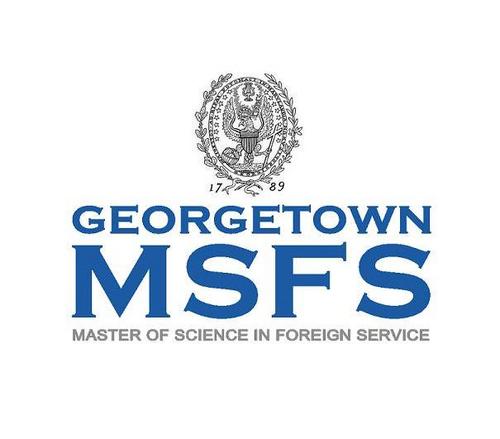Since Donald Trump’s return to the White House, he has made sweeping changes to the American immigration system through a slew of executive orders. This onslaught, which includes a highly contested attempt to end birthright citizenship in the United States, has generated heated debates in the courts as well as the media. Other controversies involve the uncertain fates of thousands of refugees left stranded at the border between the United States and Mexico late January following the sudden shutdown of the CBP One App. Amongst all this political noise and administrative chaos, it is easy to lose sight of another central component of immigration discourse—changes to the status of existing avenues of legal immigration.
While Trump’s policies have been mostly directed against undocumented migrants and asylum seekers, he has also tried to alter certain fundamental structures of the country’s overall immigration selection system. In 2019, for instance, Trump proposed the elimination of most types of family-sponsored visas in favor of a heavily “merit-based” points system which he claimed would help protect American workers. Although his plan was met with strong disapproval from both sides of the political spectrum, had it been approved, the new system would have overturned the long history of prioritizing family-based immigration in the United States.
To be clear, this 2019 case was not the first time a points system was considered by American lawmakers. Similar ideas have been proposed as far back as 1981 by the Select Commission on Immigration and Refugee Policy and as recently as 2017 in the RAISE Act. Nevertheless, no points system has ever been successfully passed due to concerns about inequity and the general difficulty of appropriately and accurately evaluating the skills needed across a variety of industries.
Given the precedent set by Trump during his last presidency, however, it is likely only a matter of time before he revives the push for a predominantly merit-based immigration system. Indeed, introducing a complete overhaul to the existing legal pathways for immigrants would align well not only with his priorities to “secure” the border, but also with his attack on diversity, equity, and inclusion (DEI). With respect to the issue of DEI, the Trump administration has mandated an end to all DEI hiring practices in the federal government under the justification of “restoring merit-based opportunity.”
This resurgence in the popularity of distributing opportunities solely based on certain notions of measured worth is concerning, especially when it comes to immigration regulation reform. In addition to the aforementioned issues of granting an unfair advantage to certain countries and the essentially impossible task of properly measuring an individual’s value, a points system casts a huge shadow over the country’s moral and ethical reputation by significantly reducing the allotted number of visas granted for humanitarian reasons. Furthermore, without touching upon a larger discussion about the validity of meritocracy in the first place, there are also several factual flaws behind the arguments in favor of a merit-based immigration system.
Calls for a merit-based system are often founded upon three common and closely-related myths about lower-skilled and often undocumented immigrants: that they contribute little to nothing to the economy, that they “steal” Americans’ jobs, and that they take up resources that could have been better used to help native-born citizens. These inaccurate portrayals of “non-merit” immigration perpetuate detrimental stereotypes about the thousands of migrants belonging to this group. Moreover, misinformed decisions based on these false assumptions can prove harmful for all who reside in the United States, because the actual narrative—and thus the real consequence of these misguided policies—tends to be the opposite.
The notion that “unmerited” immigrants do not provide value to the American economy is simply wrong. Apart from the tens of billions of dollars that undocumented immigrants pay in taxes to the government each year, they also make up a considerable portion of the consumer demand for the United States. As low-skilled immigrants—like everyone else—purchase food, clothing, and other items to meet their everyday needs, they drive up business in local stores and help generate economic activity for the community. In contrast, a sudden economic absence of these immigrants, as Trump’s announcement of mass deportation raids has already incited in many major cities as the undocumented hide from authorities, has a “chilling effect” on the local economy and causes a steep drop in demand, and therefore employment, for everyone.
This situation relates to the second incorrect assertion: that low-skilled or undocumented immigrants take away jobs from American citizens. Because these immigrants often work the most dangerous and poorly paid positions offered in the market, they are rarely in competition for jobs sought by native-born workers. In fact, migrant workers supply much needed labor for many crucial industries such as healthcare, food, and construction. Rather than increasing the number of substitutes for native-born laborers, “non-merit” immigration complements the growth of jobs for American workers from an economic standpoint by filling less desirable and lower-paid positions (such as dishwashers), allowing for the creation of more desirable and better-paid roles (such as managers).
If opposition to low-skilled immigration is genuinely rooted in Americans’ fear of losing their jobs due to increased competition, proposing a “merit-based” immigration system is not the answer. According to 2019 data from the U.S. Bureau of Labor Statistics, 42.2% of native-born workers held “Management, professional, and related” occupations, making this the primary category under which the majority of American citizens are employed. In comparison, traditionally lower-skilled categories such as “Service” and “Natural resources, construction, and maintenance” saw a higher percentage of foreign-born workers than native-born. Switching to a “merit-based” immigration system, which prioritizes laborers for the industries that currently employ the majority of Americans, will only increase competition for more native-born people.
Finally, hatred towards low-skilled immigrants and asylum seekers for allegedly draining government attention and resources at the expense of American citizens is wildly misdirected. In fact, the lack of assistance for the daily challenges faced by low-income Americans is not a result of the United States extending help to foreign refugees, but an overall reflection of the country’s broken welfare system. In the long run, the presence of low-skilled and undocumented immigrants improves life for working-class Americans because designing at the margins tends to benefit everyone. On the other hand, immigrants admitted through a “merit-based” system will likely be less involved in efforts to build a better social safety net because they are unlikely to be impacted by America’s relative lack of welfare services.
Handing out opportunities based on “merit” may very well seem like the most appealing, fair, and reasonable process of selection. However, a closer examination of this system from an immigration perspective reveals that this ideology is in fact harmful to the majority of workers in the United States. Indeed, the only group that stands to benefit from a switch to “merit-based” immigration will be American elites who will be able to extract more human-capital from foreign countries. Any such moves from the administration are no more than thinly disguised classism that will only serve to exacerbate the very socio-economic disparities that they are supposed to alleviate.
Margaret Zhang is a student at Northwestern University.

















